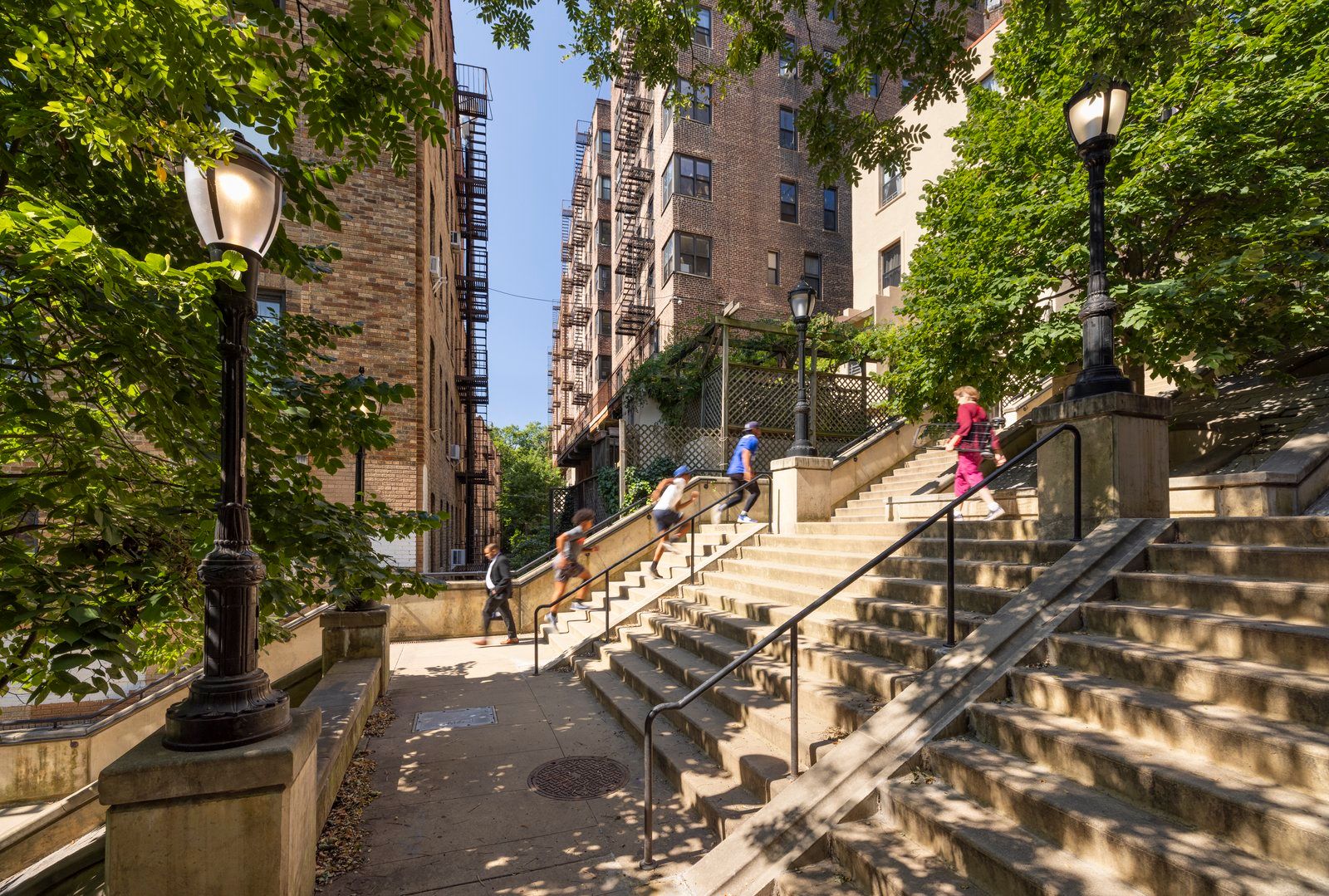
The reconstructed step street enhances accessibility and connectivity.
Pairing preservation with smart infrastructure like permeable cobblestones and precast bike channels, the our vision reimagines what a century-old stairway can offer a 21st-century city.
The West 215th Step Street has served as a vital pedestrian link in Inwood, a neighborhood in the north end of Manhattan, for over a century. It connects Broadway’s transit and shops to its residential streets. However, after years of neglect, this stepped corridor needed repair. The recent reconstruction improves the safety, accessibility, and sustainability of the staircase while elevating the experience of walking this unique New York City street.
Through decades of heavy use, the step street had deteriorated significantly. Crumbling concrete threatened pedestrians’ safety, inadequate drainage turned stairs into waterfalls during storms, and outdated lighting left evening commuters in the shadows. Cyclists struggled with the original design’s narrow metal channels for bikes. The redesign faced a delicate balance between preserving the historic character of this 100-year-old passage and upgrading it to serve an evolving neighborhood’s modern mobility needs.
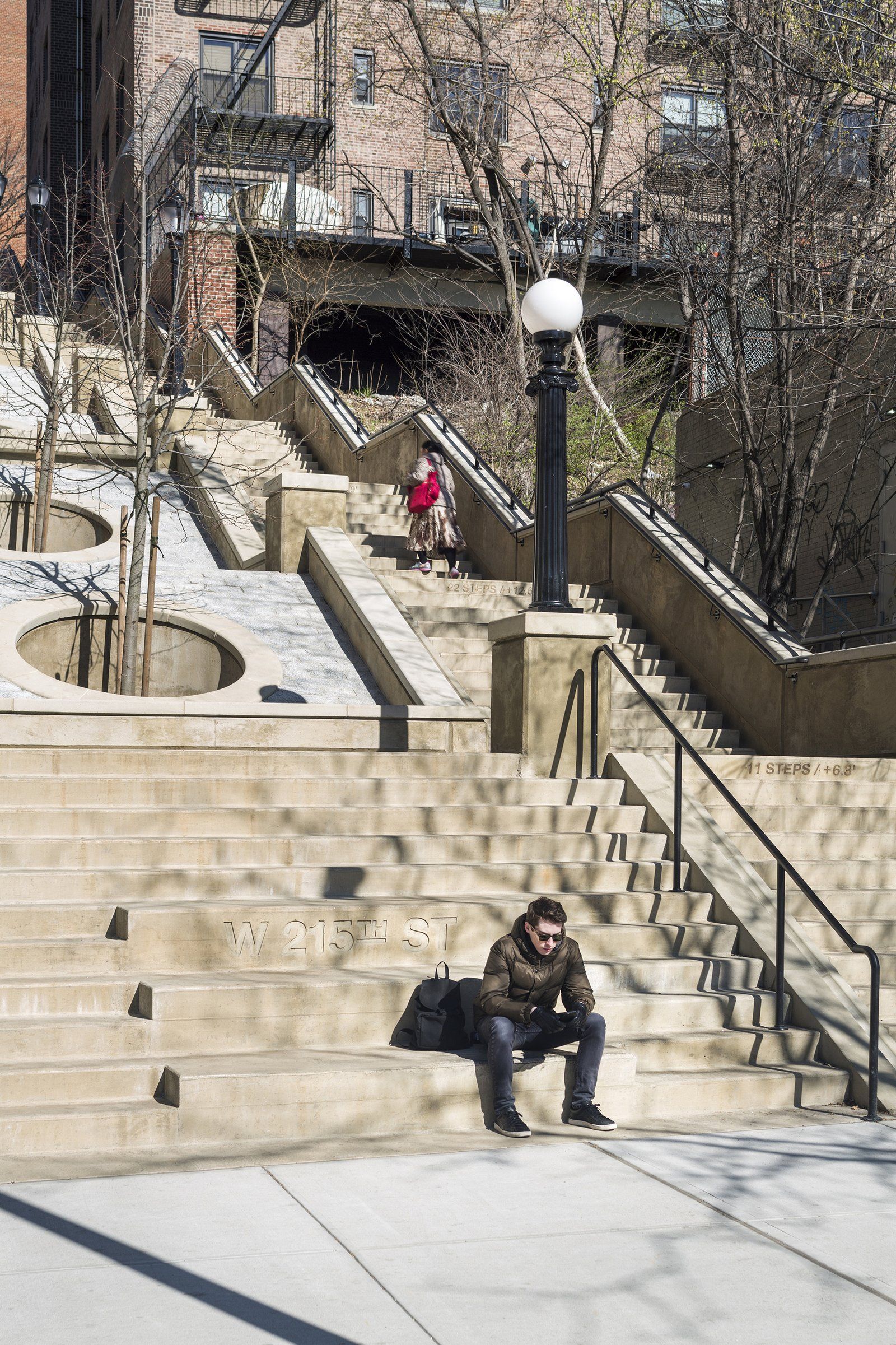
Terraced concrete seating integrates with engraved details, tree wells, and restored globe lampposts to offer informal gathering spaces
The renovated step street incorporates a variety of thoughtful elements to enhance functionality, safety, and aesthetic appeal. Wider steps, complemented by new handrails and guardrails, improve safety for users. Bicycle channels allow bikes to be walked easily along the steps. Additional LED lighting enhances visibility and honors the street’s historic character with two restored landmarked “globe” lamp posts. Seating areas turn the step street into an informal social space with a generous view. The addition of two drainage channels and permeable cobblestones surrounding tree beds enhance stormwater management. In new plant wells, Linden trees green the area and provide shade. Motivational quotes by Martin Luther King, Jr. and Lao Tzu inspire users to climb the steps. At the same time, directional and step inscriptions offer clear guidance on location, the number of steps, and the distance traveled, creating a practical, engaging design.
We worked closely with city agencies and the Inwood community to align the redesign with local priorities. From enhanced lighting to drainage improvements, each feature reflects a shared commitment to a safer, greener, and more connected neighborhood.
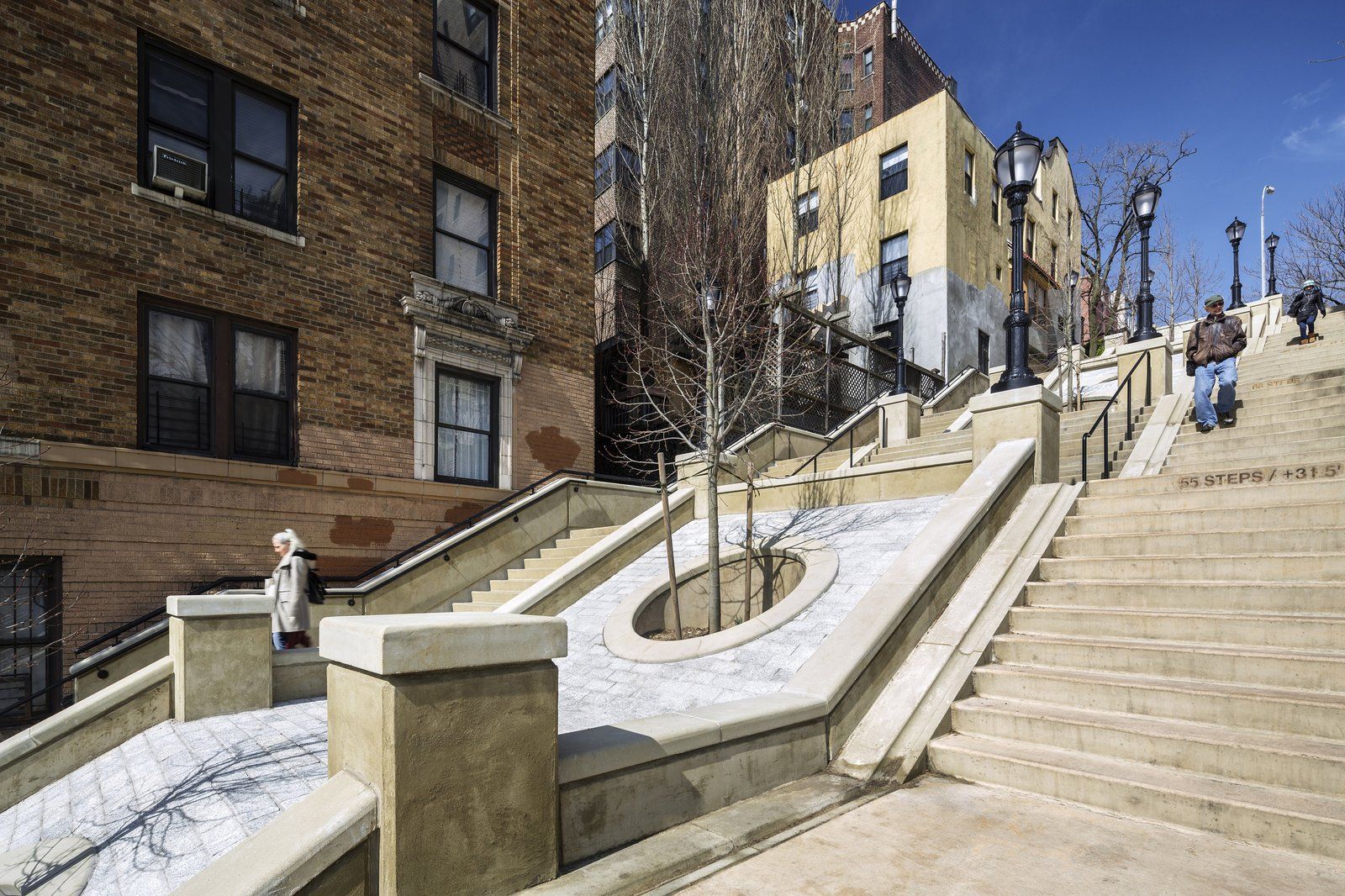
Tree wells with permeable paving enhance stormwater management.
With the 215th Street subway station averaging nearly 2,000 weekday passengers, the step street supports significant foot traffic as a critical route for daily commuters. Its consistent use and strong community support underscore the importance of the city’s investment in preserving and enhancing this essential neighborhood connection.
The primary goal of this project was the full reconstruction of the step street to provide the public with safe, non-motorized access along its length. The planted areas dividing the stairways were rehabilitated and received cobblestone paving and new trees, and the healthy existing trees falling within the proposed planting areas were preserved.
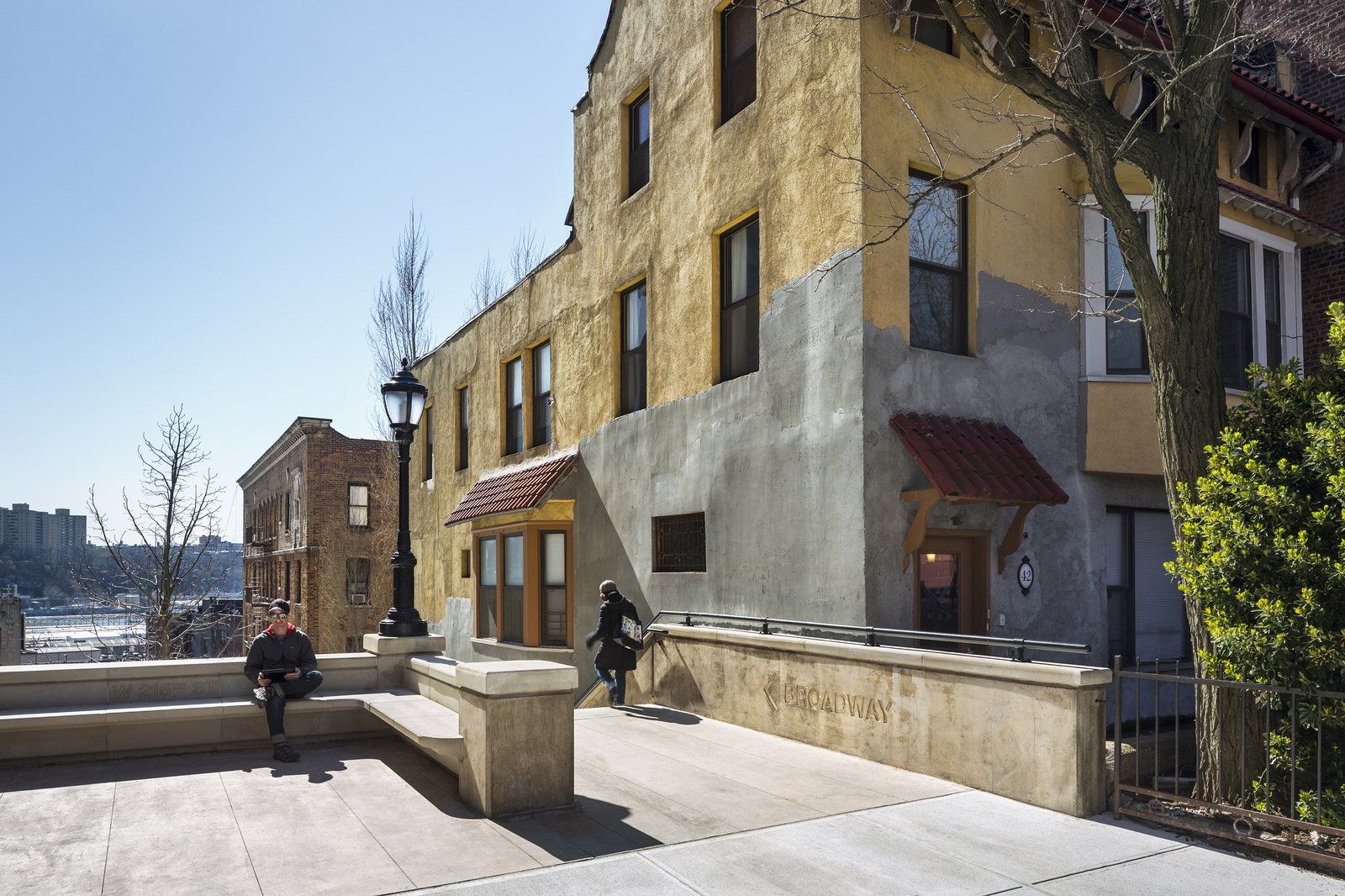
The top of the West 215th Step Street features benches, restored lampposts, and engraved concrete, offering a pause point with views of the surrounding neighborhood.
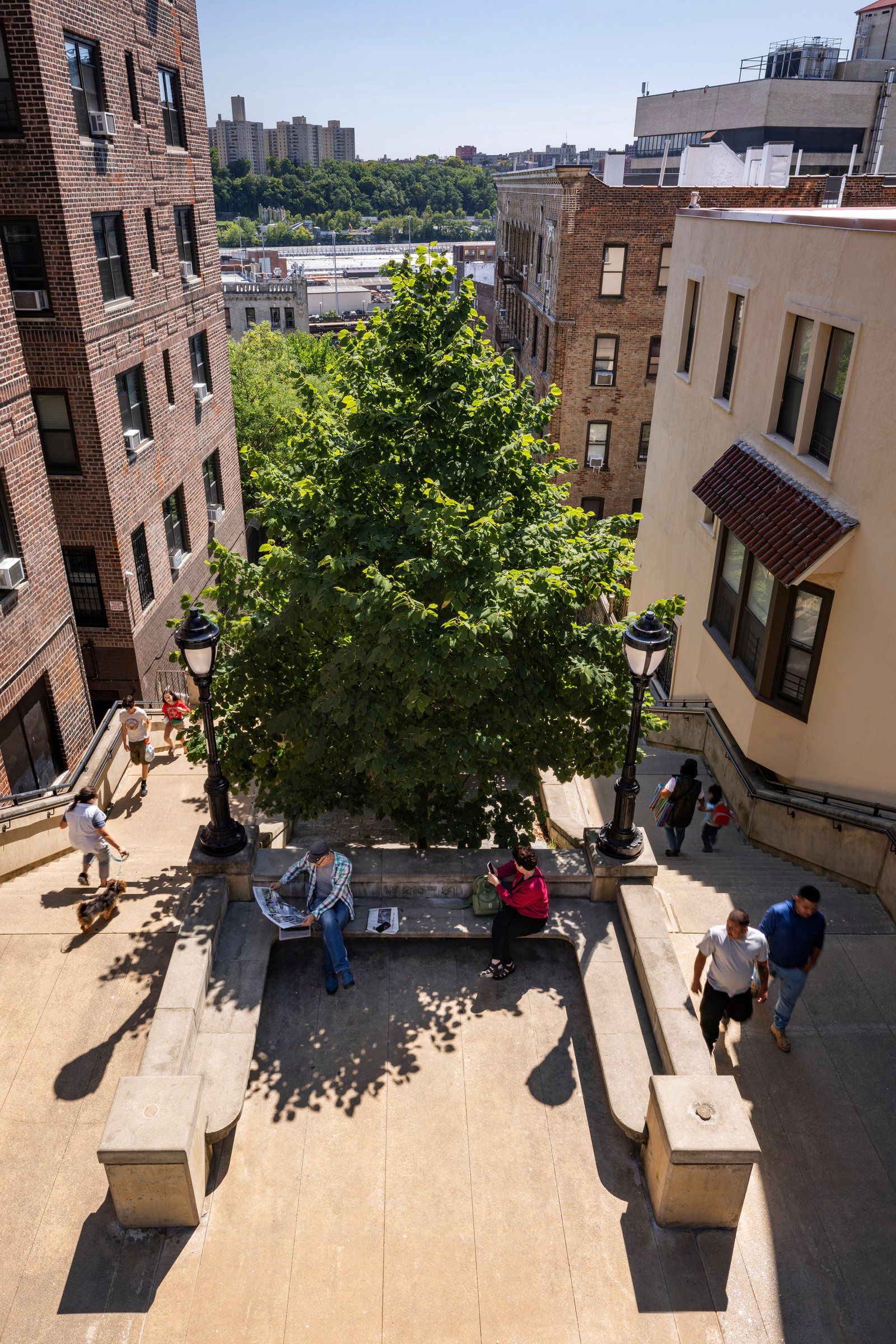
An aerial view highlights the step street's rhythmic alignment of tree wells, lampposts, and landings.
Claire Weisz Architects LLP
d/b/a WXY architecture + urban design
212 219 1953
office@wxystudio.com
Careers ↗
New York
25 Park Place, 5th Floor
New York, NY 10007
Toronto
30 St. Patrick Street, 5th Floor
Toronto, ON M5T 3A3 Canada
Subscribe to our newsletter
Site designed by Clinton Van Arnam
Developed by Mario Giampieri